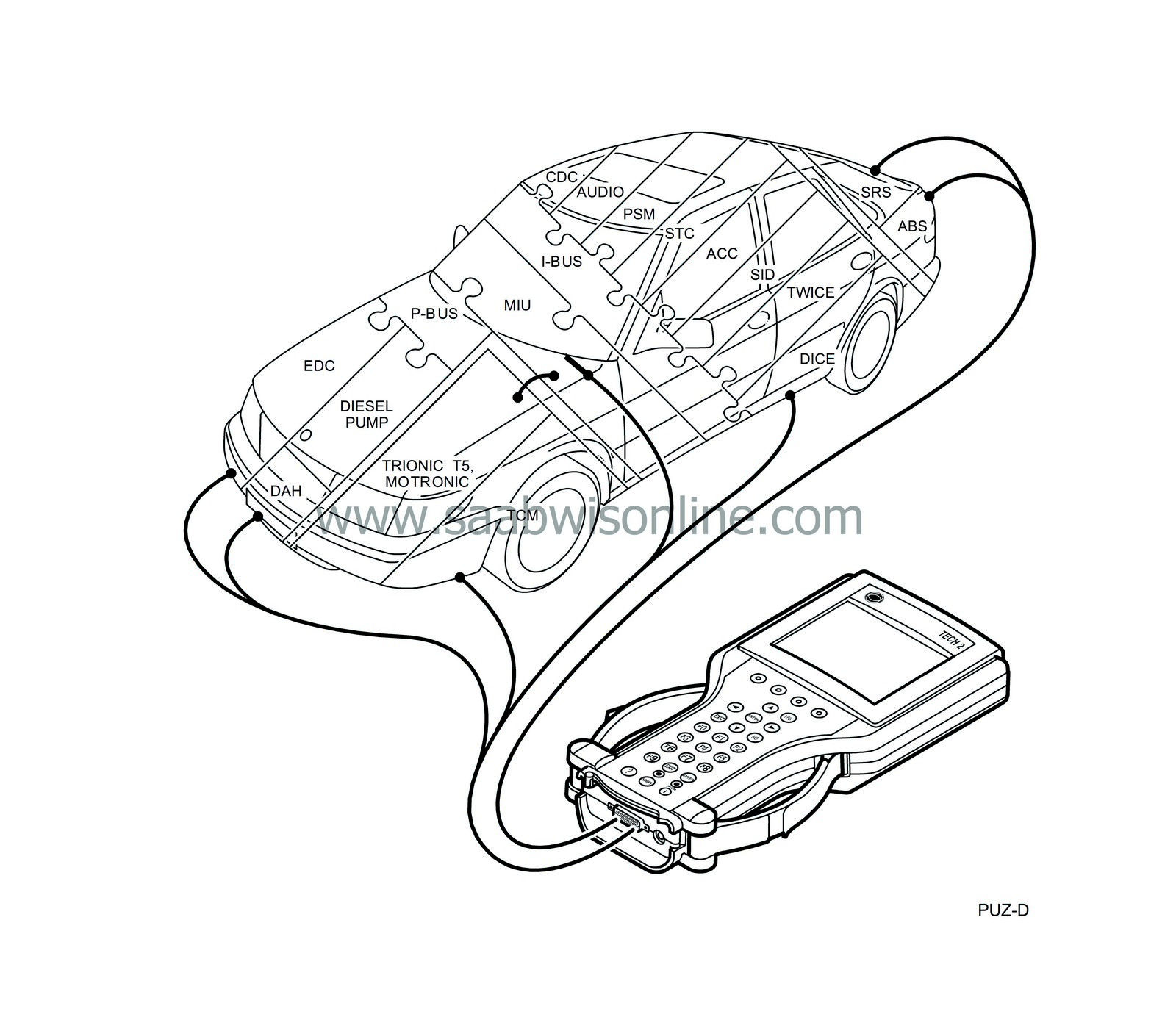PRE-RELEASE
Climate control system
| Climate control system |
The climate control system in the Saab 9-3 is designed to provide the passengers with a comfortable cabin temperature regardless of outside conditions.
The climate control system for the Saab 9-3 is available in three versions:
| • |
Manual heating and ventilation system.
|
|
| • |
Manual heating and ventilation system with air conditioning (A/C = Air Conditioning).
|
|
| • |
Automatic climate system (ACC = Automatic Climate Control).
|
|
This chapter describes the heating and ventilation system as well as the A/C system. The control panel, heating and ventilation and the ACC system is described in detail in the sections "Technical description Control panel, heating and ventilation" respective “Technical description ACC”.
The climate control unit is located in front of the centre console. Air is drawn in through the grille above the bulkhead. It passes through the fresh- air filter, recirculation flap and the ventilation fan before reaching the evaporator (on cars with A/C). If the A/C is activated, the air is cooled.
The air then passes through the air-mixing dampers. Depending on the position selected on the heater controls, the air-mixing dampers direct a certain amount of the incoming air through the heater box.
The temperature in the heater box itself is not affected by the position of the heater controls.
If the "cold air" position has been selected on the control panel, the air-mixing dampers will be closed to prevent the air from reaching the heater box.
On cars with A/C for certain markets, there is a shut-off valve for coolant flow to the heater box in order to achieve maximum cooling effect. This solenoid valve is activated when the climate control system is to provide maximum cold.
The air then reaches the air distributor and is directed in to the cabin in the manner selected on the control panel. Air ducts direct the air to various vents that are located throughout the cabin.
The air finally passes through the air outlet that is located on the inside of the rear bumper on the right side.
All climate control units are equipped with recirculation flaps that are closed and opened by pressing a switch on the control panel. When the flap is closed, no fresh air enters the climate control unit, instead the cabin air is recirculated.
| P-bus and I-bus |

The two powertrain systems EDC and the diesel pump are not connected to the I-bus. These systems need much faster communication so that no delays are noticeable, for example, torque limitation in conjunction with gearshifting.
Therefore, they are connected with a separate bus called a P-bus (Powertrain bus). The P-bus has a communication rate ten times that of the I-bus.
In addition, the P-bus is connected to the MIU (main instrument unit). The MIU is responsible for making sure that information available on one bus also is available on the other bus.


